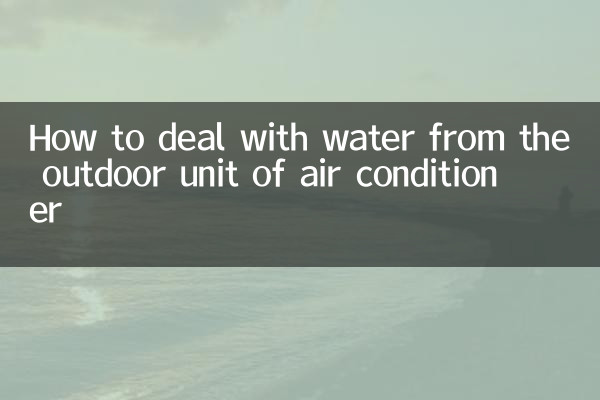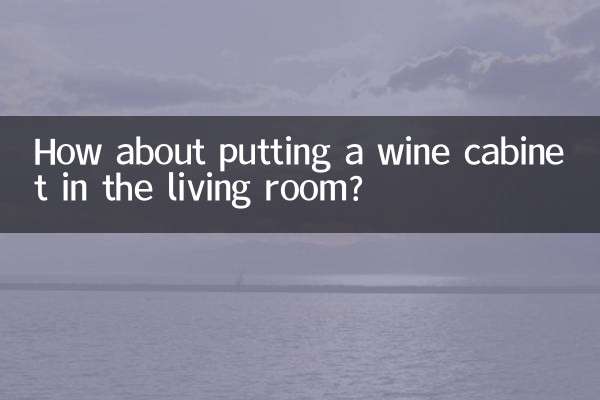How to deal with water from the outdoor unit of air conditioner
As the hot weather in summer continues, the frequency of use of air conditioners has increased significantly, and the drainage problem of outdoor air conditioners has also become one of the hot topics recently. Many users reported that water dripping from the outdoor air conditioner affected their lives and even caused conflicts among neighbors. This article will provide a detailed explanation of the sources, treatment methods and precautions of air conditioner outdoor unit water, and provide structured data for reference.
1. Source of water in outdoor unit of air conditioner

Water dripping from the outdoor unit of the air conditioner mainly comes from the following two ways:
| Source type | Cause | Water volume characteristics |
|---|---|---|
| condensation water | Condensation occurs on the evaporator of the indoor unit during cooling | Continuously stable and positively related to humidity |
| Defrost water | Defrosting of outdoor unit occurs during heating in winter | Intermittent, more obvious at low temperatures |
2. The correct way to handle water from the outdoor unit of the air conditioner
For different installation environments, the following solutions are recommended:
| Installation scenario | Recommended plan | Implementation points |
|---|---|---|
| low rise residential | Diversion pipe leading to drainage ditch | Use PVC pipes to fix and maintain a 1% slope |
| high-rise building | Install water collection pan + drainage pump | Clean regularly to prevent clogging and inspect the pump body |
| business place | Connect to building drainage system | Requires property management cooperation and compliance with regulations |
3. Common misunderstandings and precautions
Special attention should be paid to the following when handling water from the outdoor unit of the air conditioner:
1.Direct discharge into public areas is prohibited: It may violate the "Urban City Appearance and Environmental Sanitation Management Regulations" and cause slippery ground safety hazards.
2.Avoid simply blocking the drain outlet: It will cause water to flow back and damage the equipment, and the repair cost may exceed one thousand yuan.
3.Regular maintenance is important: According to statistics, the failure rate of unmaintained air conditioning drainage systems is three times higher than that of regularly maintained ones.
| maintenance items | cycle | Operational points |
|---|---|---|
| Drain pipe inspection | monthly | Check for cracks or peeling |
| Drainage pan cleaning | Pre-season | Remove algae and debris |
| Drainage pump test | half a year | Manual triggering ensures normal operation |
4. Innovative solutions
New treatment solutions that have appeared on the market recently:
1.Rainwater collection system: Connect air-conditioning water to the rainwater recycling device, which can be used for plant watering, with a water saving rate of 15%.
2.Evaporative treatment device: The fan accelerates drainage evaporation, especially suitable for balconies where drainage pipes cannot be installed.
3.Intelligent monitoring system: Real-time monitoring of drainage volume, automatic alarm when abnormal, preventing flooding accidents.
5. Legal Norms Reference
According to the requirements of "Design Code for Building Water Supply and Drainage" (GB50015-2019):
- The air conditioning condensate pipe should be set up separately and should not be directly connected to the sewage pipe
- The diameter of the drainage pipe shall not be less than DN25
- Horizontal pipe slope should be ≥0.01
Through the above systematic solutions, we can not only effectively deal with the drainage problem of the outdoor unit of the air conditioner, but also avoid disputes and legal risks. It is recommended that users make drainage planning and regular maintenance when installing air conditioners to ensure long-term stable operation of the equipment.

check the details

check the details